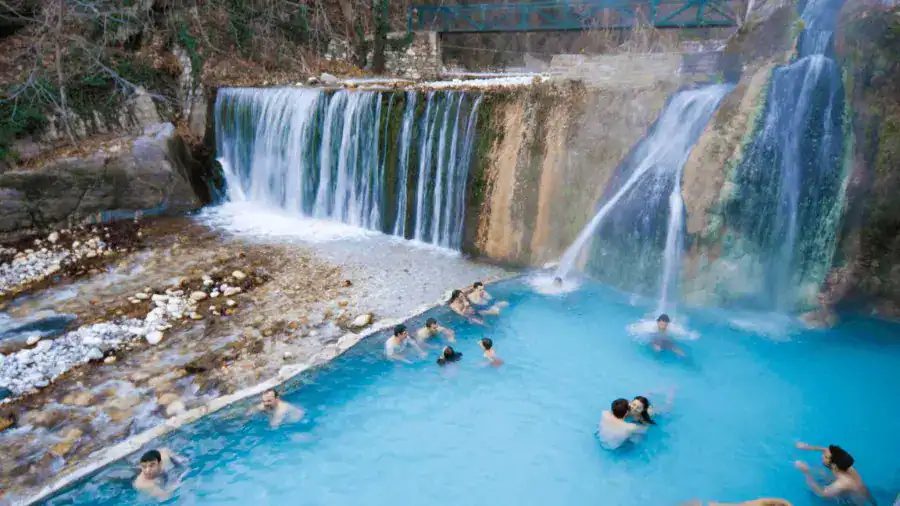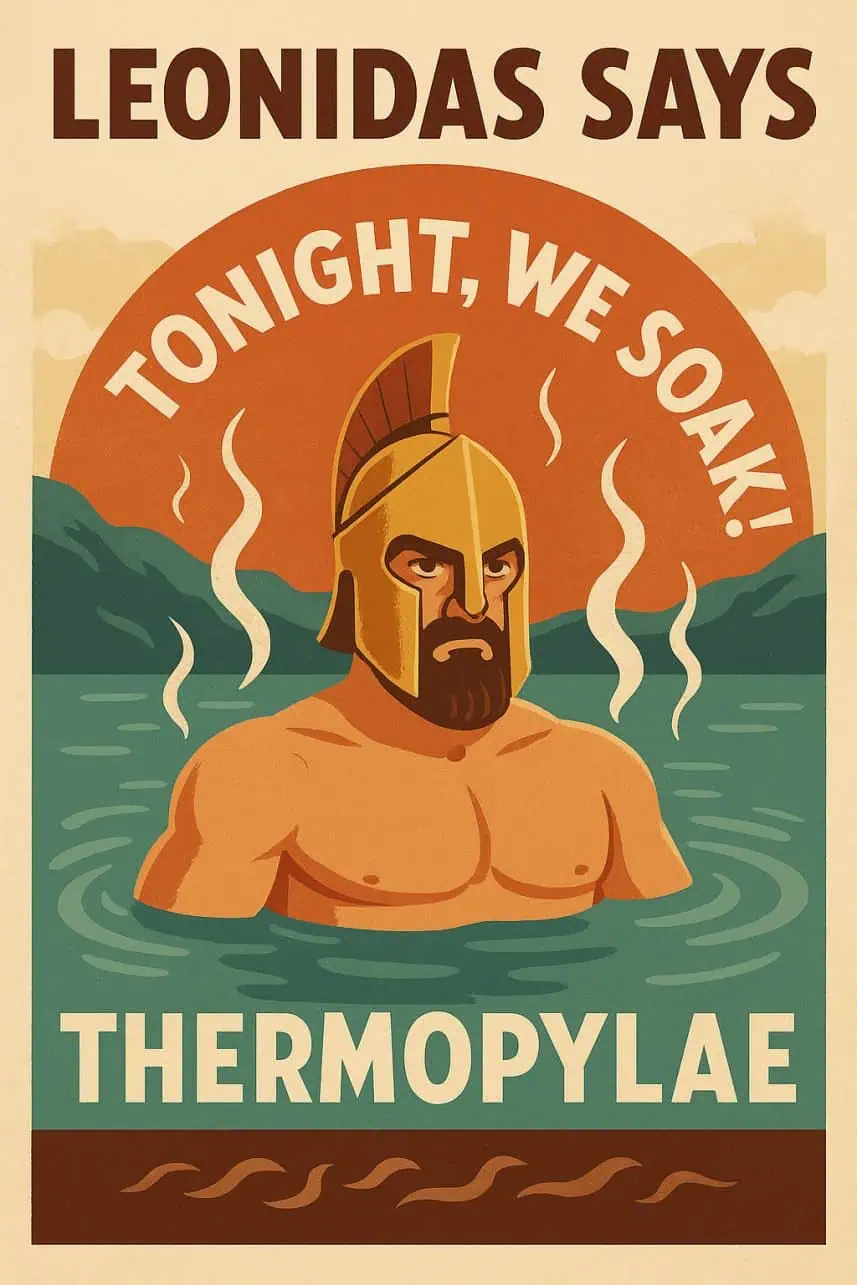Introduction to Hot Springs in Greece
The first light of dawn weaves into the low-lying mist, turning it gold. Steam curls lazily above the water, blurring the lines between the banks and grassy land. Wade in carefully—there are secrets from another age yet to uncover before you can relax. In the distance, the Leonidas monument stands guard, looming about as large as he should—stern and solitary against the rising sun.
Where Warm Waters Meet Epic History
Thermopylae (Θερμοπύλες) means “the Hot Gates,” a name earned from the geothermal springs that have bubbled here for thousands of years. Cradled between mountains and sea, this narrow pass was both a strategic bottleneck and a sacred site. In 480 BC, King Leonidas led 300 Spartans (plus allied Greeks) in a famed last stand against Persia—and though historians still debate how many stood, who stayed, and how the battle unfolded, their myth has shaped generations and whole cultures to come.
Top Hot Springs in Greece: From Volcanic Bays to Mountain Escapes
Beyond Thermopylae, Greece offers a dazzling variety of natural springs—from wild mountain pools to seaside resorts with centuries of history. One of the most notable is the Pozar Hot Springs, located in Northern Greece. Set in a forested gorge at the foot of Mount Voras, Pozar is one of Greece’s most beloved thermal escapes. Steaming waterfalls tumble into stone pools surrounded by greenery and cliffs.
Edipsos Hot Springs – Evia Island
Known since antiquity, Edipsos is where Heracles supposedly bathed between Labors, and where Roman emperors came for rejuvenation. Today, you can soak in free coastal rock pools or visit traditional spa hotels. Low tide reveals more natural pools, making it an ideal spot for those looking to explore the area’s natural beauty.
Loutraki Thermal Spa – Corinthia
Loutraki blends modern spa treatments with ancient pedigree. The town has been famed since classical times; today it’s an easy wellness day trip from Athens, combining historic charm with hydrotherapy and seaside strolls. Visitors can enjoy a range of spa services, from massages to facials, all while taking in the stunning views of the surrounding area.
Santorini Hot Springs – Volcanic Baths in the Caldera
A Santorini boat tour highlight: swimming from the cool Aegean into gently warm, rust-colored volcanic waters. The caldera views make this one of Greece’s most memorable thermal experiences. However, it’s essential to take precautions, as the sulfur- and iron-rich water can irritate sensitive skin and shouldn’t be entered with open cuts. Rinse off well after your swim, and consider wearing dark swimwear to avoid staining.
Myth & Healing: Ancient Beliefs in Hot Springs in Greece
For ancient Greeks, springs were gifts from the gods: Heracles bathed at Edipsos and Mount Oiti to regain his strength and ascend to Olympus. Nymphs were believed to bless springs like Loutra Ypatis with rejuvenating power. Wise centaurs like Chiron were linked to healing springs in the Peloponnese. Thermal waters were sacred spaces for renewal—a tradition that still lingers in how locals treat them today.
Practical Guide: Visiting Thermopylae Hot Springs
Location: Near Lamia, Central Greece — 175 km north of Athens. Admission: Free. Hours: 24/7, year-round. The best time to visit is at dawn for magical mist and golden light, daytime for a livelier local vibe, or night for solitude (bring a flashlight!).
Getting There
By car, it’s a 2-hour drive from Athens (E75 north) with free parking onsite. Alternatively, take the KTEL bus to Lamia and then a taxi for the last stretch. Many tours combine Thermopylae with Delphi or Meteora, offering a comprehensive experience of the area’s history and natural beauty.
What to Bring
Don’t forget to pack a dark swimsuit (sulfur stains), towel, flip-flops, water, and a flashlight for early or late visits. It’s also essential to stay hydrated, as the hot springs can cause dehydration.
Health & Safety Tips for Visiting Hot Springs
Greece’s thermal waters are natural and often rich in sulfur, iron, and other minerals. While most travelers enjoy them without issues, it’s worth keeping a few health precautions in mind: limit children’s soaking time, consult your doctor if you’re pregnant, and avoid soaking if you have open wounds or sensitive skin. Always rinse off after bathing and drink plenty of water to stay hydrated.

Greece’s thermal springs are more than wellness stops—they’re living links to history, landscape, and myth. Whether you soak at dawn in Thermopylae, swim into Santorini’s caldera, or follow Heracles’ trail at Edipsos, these waters invite you to slow down and step into stories thousands of years old. For more information and to plan your trip, visit Here
Image Credit: traveldudes.com


